With an ever-growing trend of gluten intolerance, flour alternatives have become increasingly popular.
But what exactly is a gluten-free flour and how do you use it?
Gluten-free flours are capable of serving as perfect replacements for traditional wheat-based flour products but the best method for using them can prove perplexing.
If this has got your wheels turning, fret not.
Here we explore five alternatives that make the perfect substitute for gluten-free flour and the steps necessary to reap the full benefits.
What is Gluten-free Flour?

If you’re following a gluten-free diet, finding the right kind of flour can be critical.
Gluten-free flour is essential for those living with celiac disease and other related sensitivities.
But even if you don’t need gluten-free options, these flours can still offer delicious recipes without sacrificing texture or taste.
Gluten-free flour usually contains some combination of rice, tapioca, sorghum, arrowroot, quinoa and bean flours, as well as starch gums such as xanthan gum to replace the role of gluten in baking.
They come in all kinds of varieties from all-purpose to pastry to almond and are simple to use in any recipe—simply replace the usual amount of wheat flour with the same amount or slightly more of the gluten-free alternative.
The flavor and texture will be different due to the various combinations so understanding what it tastes like before mixing it into recipes is important for discovering new flavors unique to each type.
However, once mixed with spices and other ingredients, it’s natural sweetness shines through.
In addition to being used as an ingredient in many dishes—from cake to cookies—gluten-free flours can also be used as thickeners or binders.
So regardless how you’re using it, there’s something special waiting inside every bag.
The 5 Best Substitutes for Gluten-free Flour
When looking for gluten-free flour alternatives, there are five main options that are commonly used as substitutes.
Each one provides a different flavor and level of nutrition, so you’ll want to pick one that is suited to your specific recipe or dietary needs.
Here’s a look at five of the best gluten-free substitutes:
1 – Teff Flour
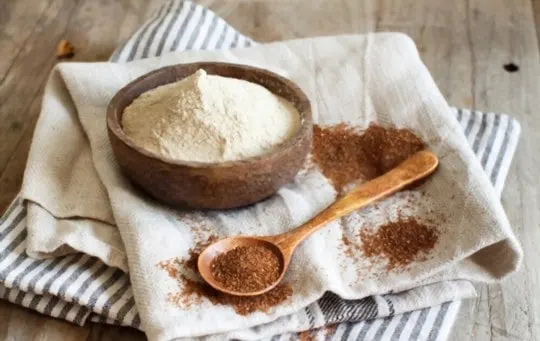
Teff Flour is a great option for gluten-free baking.
It is made of small, grain-like seeds that are exceptionally nutritious and quite high in protein and fiber.
When used as a flour, teff has a relatively mild flavor with notes of nuttiness and molasses.
It is slightly more coarse than traditional wheat flours, which can create interesting texture when used in baked goods.
Teff flour also has incredibly high concentrations of vitamins, minerals and antioxidants like iron, calcium, thiamine and riboflavin that makes it an especially healthy alternative to conventional wheat flours.
Teff works great in cakes, muffins, pastries and artisan breads although it does take some trial-and-error since teff does not have the natural rising properties found in wheat flours.
2 – Brown Rice Flour
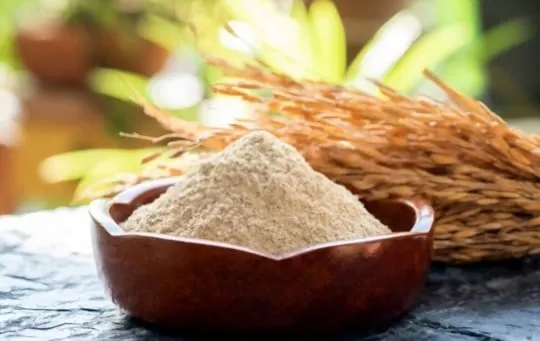
Brown rice flour is a great gluten-free alternative to wheat flour.
It can be used in most recipes to replace all-purpose flour, but it works best in combination with other gluten-free flours.
Brown rice flour has a nutty flavor and provides some fiber and nutrients like manganese, phosphorus, and magnesium.
It’s important to note that brown rice flour can easily become contaminated if processed on equipment that also processes wheat or other grains containing gluten so it’s best to only purchase brown rice flour from companies that guarantee no cross-contamination.
3 – Quinoa Flour
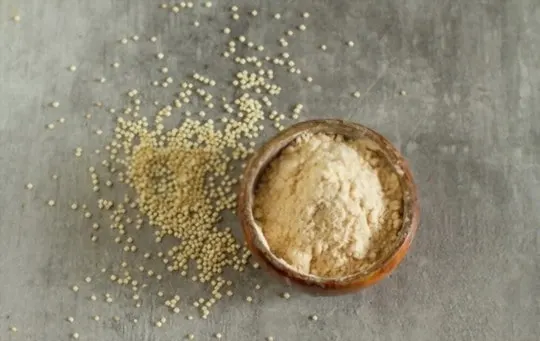
Quinoa flour is one of the best substitutes for gluten-free flour and is one of the most nutrient-rich grains.
It is naturally gluten-free, rich in protein, and high in fiber.
Quinoa is a great source of essential minerals such as magnesium, iron, phosphorus and manganese.
It also provides all nine essential amino acids making it a complete protein.
This type of gluten-free flour has a slightly nutty flavor which works great in sweet and savory recipes.
Quinoa flour can be substituted for wheat flour 1:1 so you don’t have to worry about adjusting measurements when baking with it.
It can be used to make everything from pizza dough, cookies to pancakes or even pizza crusts.
4 – Arrowroot Flour
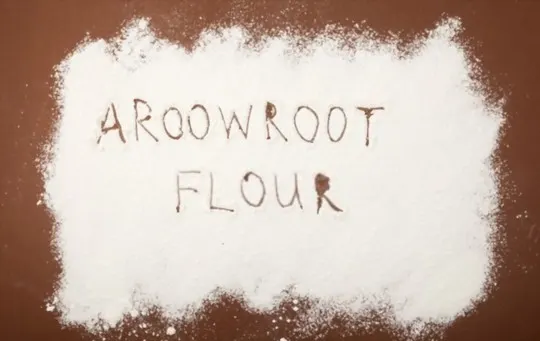
Made from the tap root of the arrowroot plant, this fine, white flour is gluten-free and easy to digest.
Arrowroot flour has a neutral flavor and can be used instead of wheat or other grain flour in a 1-1 ratio.
It can give baked goods a slightly gummy texture, so it works best when mixed with other gluten-free flours.
It works well as a thickener in sauces and soups and can be used in place of cornstarch as well.
Arrowroot is low in starch, but high in fiber, which makes it an excellent choice for baking cakes and other treats.
5 – Tapioca Flour
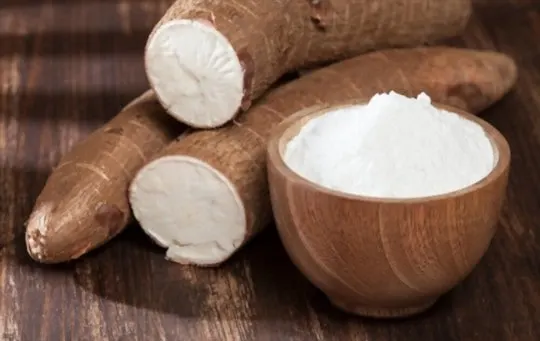
Tapioca flour, also known as tapioca starch, is an ideal choice for recipes that require a bit of elasticity.
Made from the tapioca or cassava root and native to South America, this starchy, odourless white flour is full of vitamins and minerals.
It has a subtle taste that does not overpower dishes and has become increasingly popular for its gluten-free properties.
Tapioca flour is great for baking as it produces light cakes with a soft and tender texture due to its high starch content.
This ability makes it an excellent gluten-free substitute when making breads, pizzas, pies, tarts or cookies.
However due to its lack of protein content and high carbohydrate nature, it’s important to use other flours in combination in order to make all these dishes taste optimal – as they are derived from wheat and can alter the final results dramatically.
Conclusion
In conclusion, there are a variety of different types of gluten-free flour that can be used to replace wheat flour in many recipes.
Each one has different characteristics, flavors and textures and may work better in certain recipes than others.
Depending on your dietary needs, it is important to use gluten-free flour in order to avoid any allergic reactions or health complications.
Additionally, it is important to note that not all gluten-free flours are created equal and some may not be suitable for certain dishes due to how they behave when baked or cooked.
Be sure to experiment with different types of gluten-free flours in order to find the ones that work best for you.

The 5 BEST Substitutes for Gluten-free Flour
Ingredients
- 1 – Teff Flour
- 2 – Brown Rice Flour
- 3 – Quinoa Flour
- 4 – Arrowroot Flour
- 5 – Tapioca Flour
Instructions
- Choose your preferred substitute from the list of options.
- Organize all of your ingredients.
- Use the proper substitute to cook your recipes.
